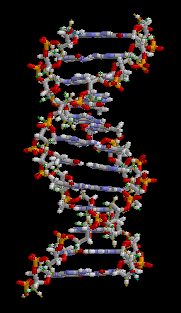BI PLASTICS

Environmental
Technology
WHAT ARE BIOPLASTICS?
I'm a title. Click here to edit me.
I'm a paragraph. Click here to add your own text and edit me. It’s easy. Just click “Edit Text” or double click me to add your own content and make changes to the font. I’m a great place for you to tell a story and let your users know a little more about you.
Video

THE EFFECTS & IMPORTANCE OF
BIOPLASTICS
Since bioplastics are renewable, nontoxic, require less energy to produce, and overall environmentally friendly, incorporating bioplastics into our everyday lives will improve many environmental factors, impacting the globe for the better.
Unlike traditional plastics that can take up to 500 years to break down, bioplastics do not contain any harmful chemicals making them capable to break down into the environment much quicker. Bioplastics produce around 70% less of toxic greenhouse gases as it degrades into landfills.

[H.6]
[H.17]

FURTHER INFORMATION
About Bioplastics
Scroll Down
Want to learn more?
H.6
WHY IS IT IMPORTANT?
[H.5]
[H.9]
H.10
H.11
H.12
H.13
H.14
H.15

HOW DO BIOPLASTICS WORK?
Bioplastics are composed of biopolymers instead of using fossil fuels. Most commonly, bioplastics can be manufactured from 2 main categories -- polyactide,(PLA) which are mainly starch based and polyhydroxybutyrate (PHB) which are made from bacteria. Bioplastics come in a wide variety including starch, cellulose, protein, polyamide 11, (PA 11) and many more.
The process begins by taking corn or any other raw materials that are fermented in order to produce lactic acid, replacing petroleum products. The harvested plant material undergoes an extraction to remove their starches and then transferred to bio-refineries. Certain enzymes produce chemical compounds which are then taken to manufacturers to make utensils, plastic bags, plates, and bottles, completing the cycle of how bioplastics are made to be safe for the environment.
Bioplastics are a new and alternative type of plastic which are comprised and enriched with natural materials such as vegetable fats, oils, corn starch, or microbiota. Bioplastics reduces the complication of plastic waste all over the globe that contaminates the environment.
[H.4]

Unlike traditional plastics which can take up to 1,000 years to break down, bioplastics only take up 80-100 days to deteriorate.
Furthermore, bioplastics generally do not release carbon dioxide gas once they begin to break down as the plants being used in the manufacturing process, absorbs the same amount of carbon dioxide to begin with. Ultimately, bioplastics produces 70% less amount of toxic greenhouse gases once it is released onto landfills.
Despite bioplastics being renewable and nontoxic, these new forms of plastics contribute a huge role towards the problems of littering and harming marine life worldwide. Bioplastics degrade in a faster process, reducing the increasing rates of conventional plastics ending up in landfills and even floating around in oceans for many years, which is puts in a huge risk towards marine animals.
[H.22][H.23][H.24]

FOLLOW UP ON THE
LATEST NEWS
CLICK BELOW TO DISCOVER MORE ABOUT BIOPLASTICS
INTERESTING ARTICLES ABOUT BIOPLASTICS
___
"In the past, fields of wheat and rows of potatoes were seldom destined for anything more than a rumbling tummy. But bio-products have come a long way since people first branched..."
"Wyss Institute researchers have developed a fully degradable bioplastic by isolating a material called chitosan found in shrimp shells and forming a laminate with silk fibroin protein that mimics..."
"Bioplastics maker Metabolix Inc. is exiting that market to focus on crop enhancement technology. The decision has prompted London-based bioscience firm Cellulac plc — an investor in Metabolix..."
"For more than a decade bioplastics have, essentially, been a giant lab experiment. Plastics made from plants hold a lot of promise, given that most consumer plastic on the market today..."
Bioplastics are a completely different form of plastics compared with commercial plastics. Traditional plastics are based off of petroleum whereas bioplastics are mainly derived from renewable biomass sources. Within bioplastics, it can break down in two different forms-either anaerobic or aerobic environments depending on how they were manufactured. These are 100% degradable, resistant and versatile, helpful regarding the agriculture textile, and medicine industry. Over all, bioplastics are being put into the use of the container and packaging market.










